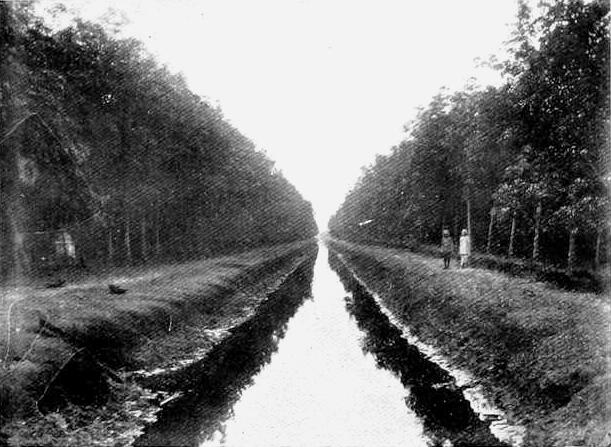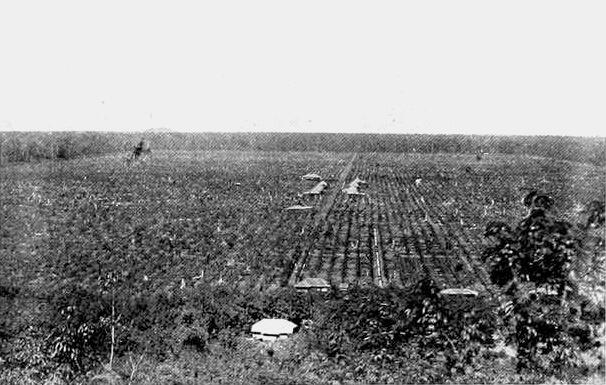| 6 |
Kapar drainage scheme |
In my first published report of the anti-malarial measures of Klang, I referred to the gradual improvement in the health of Kuala Selangor district, as the result of draining large areas, in contrast with the more rapid improvement, which had occurred in Klang and Port Swettenham, as the result of measures carried out in a shorter period. These facts came to the notice of the late Mr. W. W. Bailey, who wrote to Government, complaining that the Klang end of the road still obstructed the drainage of the land, making it impossible to drain the estates efficiently; and attributing the malaria, which then existed on the estates, to the road. In support of his proposals he quoted my investigations in Kuala Selangor, and referred the Government to me for further information.
| 6.1 |
A report on road drainage |
On 29th April 1904, at the request of Government, I forwarded a report which was published [10], and from which the following are extracts:
Roads and other public works, by producing breeding places for mosquitoes, are important agents in spreading malaria and filaria. Roads in flat country, especially when parallel to the coast, are injurious in two ways: (1) During their construction borrow pits are formed, and these remain afterwards as mosquito breeding places; (2) when completed, roads may interfere with drainage of land on the inland side of the road.


I quoted such figures as were available, which showed that from 55 to 65% of the deaths registered among residents on the Kapar road were attributed to fever, and up to 35%, of the admissions to hospital were from malaria, and said:
Without straining these figures, there is little doubt that malaria is an important cause of sickness and death among the people living along the road.
Not being a civil engineer I declined to say that the drains were insufficient to drain the land, or that the openings through the road were insufficient to allow the water to find its way to the sea, although in wet weather the whole inland side of the road was flooded and the water came to within a short distance of the level of the road. I, however, wrote:
It would be going beyond my province to express an opinion as to whether or not the Klang-Kuala Selangor road is still preventing the drainage of the estates and the land on the inland side, but the unanimity of the planters on the point and the sight of water standing often many feet higher on the landward than seaward side of the road, seem evidence sufficient to justify a thorough inquiry. … When it can be proved that a road interferes with the drainage of the land on which any considerable population live (such as on the Klang-Kuala Selangor road), then expenditure on drainage is advisable from every point of view.
I then made some remarks on the construction of drains from the point of view of anti-malaria sanitation, and the necessity of engineers remembering that “work which without excuse leaves a trail of malaria behind is bad engineering.” Finally, I would express the opinion that the stamping-out of malaria, or at least reducing it to a negligible quantity, is a much more hopeful affair than has hitherto been anticipated:
The experience of Klang and Port Swettenham, taken with the knowledge that malaria has died out of the Fen Country in England, while Anopheles still flourish in considerable numbers, all point in the same direction. I would, therefore, urge upon Government that to abolish malaria it is not necessary to abolish mosquitoes completely, and that measures intelligently directed at the disease may at once cost little and be strikingly effective.
| 6.2 |
The scheme approved |
As a result of the representations made, the Resident-General, Sir W. Hood Treacher, K.C.M.G, the acting British Resident, Mr. Douglas Campbell, the Director of the Institute of Medical Research, Dr. C. W. Daniels, the Government Engineers, Mr. W. W. Bailey and other planters, visited the Kapar sub-district and held an inquiry into the condition of the road and land. The necessity for improved drainage was recognised, and a scheme involving the expenditure of $110,000 was approved. The outlets through the road were enlarged, necessitating in some places bridges double the length of the previous ones; and the scheme provided 37 miles of main drains sufficient for the drainage of 24,000 acres upon which the estates now pay drainage assessment. Some of the drains constructed are 20 feet wide (Figure 6.1). The effect of this drainage will be shown further on.